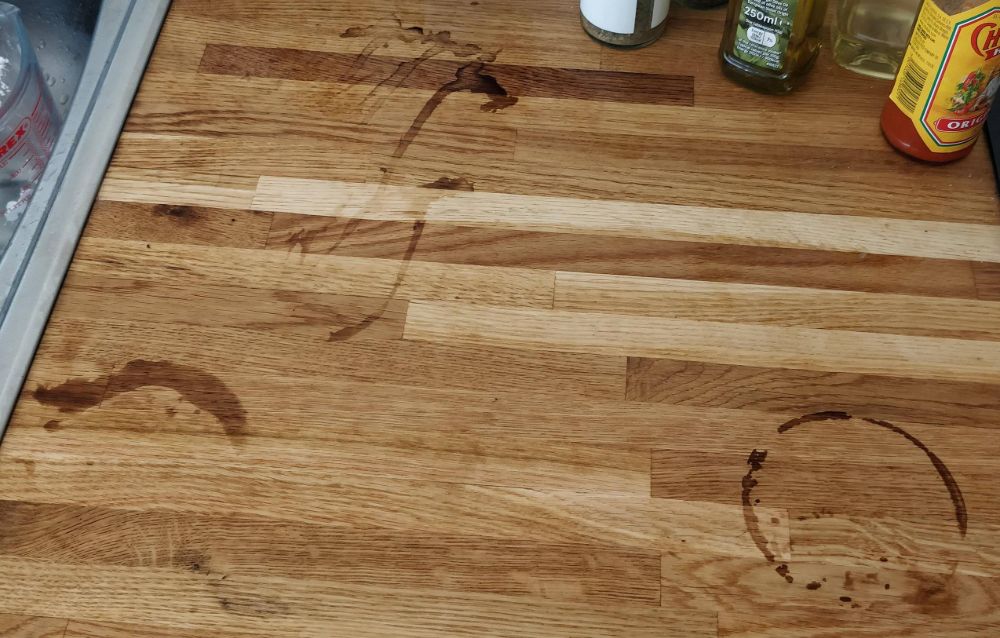Written by Nyla Thompson, founder of DecorifyIt and a certified home improvement specialist with 15+ years of experience restoring and maintaining hardwood flooring across UK homes.
After working hands-on with wood flooring for over a decade—from luxury oak installations in London townhouses to rustic pine restorations in country cottages—I’ve noticed a trend that never fails to surprise homeowners: the cleaning mistakes that quietly destroy beautiful floors. Chief among them is the use of baking soda. While it’s celebrated for its versatility, it’s far from safe when it comes to sealed hardwood.
If you’re asking, “Can I use baking soda on wood floors?”—the short answer is no. Let’s break down exactly why.
Why Baking Soda Seems Safe but Isn’t
Baking soda feels soft and harmless, right? It’s non-toxic, eco-friendly, and praised in every cleaning forum online. But here’s what most people don’t realise—it’s still an abrasive powder. And when you rub it into wood floors, especially those with oil-based or polyurethane finishes, it acts like fine grit sandpaper.
In one of my earliest consulting projects in Kent, a homeowner had sprinkled baking soda to freshen up her dark-stained walnut floor. Within weeks, she noticed dull, greyish patches forming—especially in high-traffic zones. The particles had etched through the finish, even without aggressive scrubbing.
As confirmed by Better Homes & Gardens, baking soda causes micro-scratches that wear away sealants and reduce gloss. On floors I’ve examined after regular baking soda use, I could run my fingers over the surface and feel the roughness—even if the damage wasn’t immediately visible.
Real Case: How Small Damage Becomes a Big Repair
One case that stuck with me involved an engineered oak floor in Manchester. The owner used a baking soda paste after her puppy had an accident. At first, the stain faded, and she thought it worked. But three months later, the floor looked splotchy and uneven under sunlight. A closer inspection revealed that the baking soda had eroded the topcoat, letting in moisture and grime.
We had no choice but to sand and refinish the entire ground floor—a job that took four days and cost over £1,000. Completely avoidable if she had skipped the baking soda.
Why the Baking Soda + Vinegar Combo Is Even Worse
This DIY trend pops up all over YouTube and Pinterest: mix baking soda with vinegar and let the fizz clean your floor. But here’s the problem—vinegar is acidic and strips away finishes, while baking soda grinds them down. The chemical reaction might look effective, but what it’s really doing is eating away your floor’s only layer of protection.
I’ve personally inspected maple and cherry floors where this combo was used weekly. The result? Discoloured patches, warping near the seams, and a completely matte finish that once had a beautiful shine.
According to Homemade Simple, both baking soda and vinegar can dull and damage polyurethane coatings. And in real-world experience, I’ve seen that once the finish starts to degrade, even humidity in the air can penetrate and cause planks to expand and cup.
More on this? You might find our full vinegar guide helpful: Is vinegar safe for hardwood floors?
What Science—and Experience—Tells Us
Baking soda isn’t as soft as it seems. Microscopically, it’s made of jagged crystals that scrape surfaces. It’s these micro-abrasions that build up over time. In a recent visit to a flat in Surrey, I used a hand-held LED to inspect a client’s oak floor that looked unusually chalky. The light revealed a web of shallow scratches—exactly the kind caused by repeated use of baking soda for “light cleaning.”
Mr Sander® confirms that these abrasives, even if considered “mild,” cause visible damage over time—especially on softer wood species like pine or fir, where sealant layers are thinner.
It’s Not Just Floors—Wood Furniture Suffers Too
I’ve had multiple clients attempt to clean polished sideboards or dining tables using baking soda, often to lift water rings or oil stains. While it sometimes improves the blemish, it also strips the polish, leaving the surface dull and lifeless.
One client in Bristol tried it on her heirloom walnut table. The result? A faded patch that needed full sanding and reapplication of Danish oil—just to restore a small area.
Southern Living strongly advises against using baking soda on polished wood, warning that it scratches finishes and leaves behind residue that’s hard to remove.
What the Experts Say
It’s not just home professionals warning against baking soda—major cleaning guides back it up. Tom’s Guide states baking soda is too harsh for sealed finishes and that it can break down protective layers over time.
In my own inspections across dozens of homes, I’ve found this to be especially true for newer floors finished with water-based sealants—they tend to wear faster and show damage earlier.
Other Cleaning Mistakes That Harm Wood Floors
Baking soda isn’t the only misstep. These other common habits can lead to similar long-term problems:
- Vinegar: Over time, its acidity weakens protective coatings.
- Steam mops: Moisture gets trapped between seams and can cause swelling.
- Scrubbing pads: Even soft ones can scuff finishes.
- Oil soaps: Leave a sticky film that dulls the surface.
If a product doesn’t specifically state it’s safe for sealed hardwood, assume it’s not.
What to Use Instead: My Pro Cleaning Tips
After restoring hundreds of floors, here’s what actually works:
✅ Essentials:
- Microfibre mop daily – gentle and effective for picking up dust.
- Blot spills immediately – never let moisture linger.
- pH-neutral hardwood floor cleaner – designed to protect sealed surfaces.
- Vacuum weekly – but only with a soft-brush attachment.
If you’re caring for engineered floors, make sure to follow the right routine: How to clean engineered hardwood floors
Prefer homemade? Here are my safe DIY cleaner recipes that actually work without damaging your wood.
Final Thoughts: Gentle Isn’t Always Safe
Many people assume that if something is “natural,” it’s automatically good for all surfaces. But wood is unique—it requires specific care to maintain its beauty and function. Baking soda may be great for your sink, but on your floors, it slowly erodes everything that keeps them looking great.
If you’ve spent good money on hardwood floors, protect that investment with the right tools, the right habits, and the right guidance.

